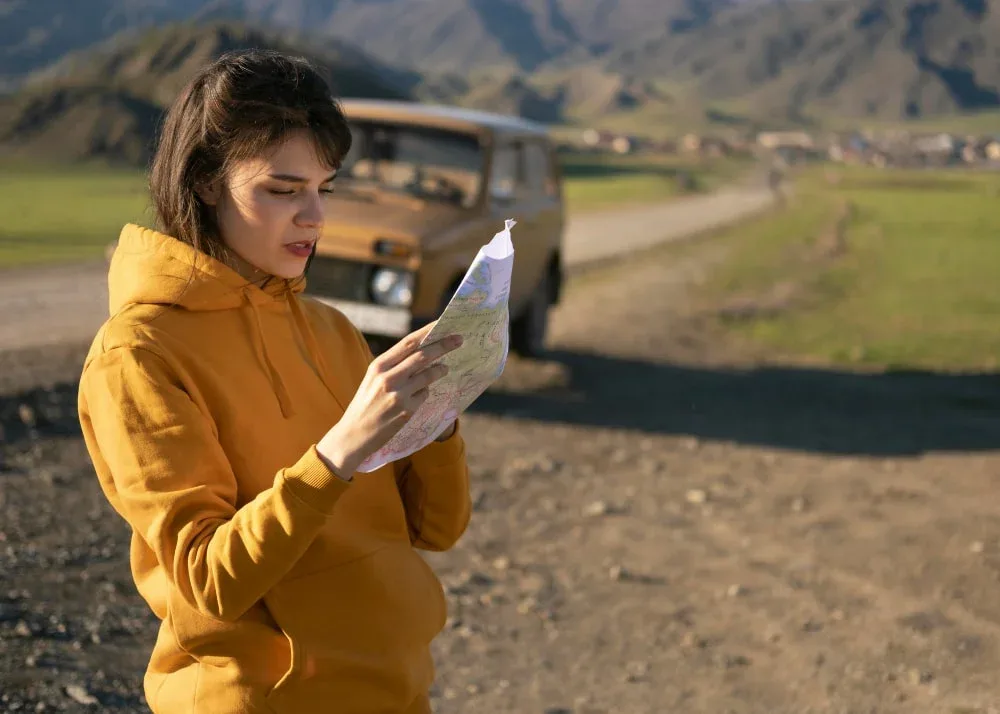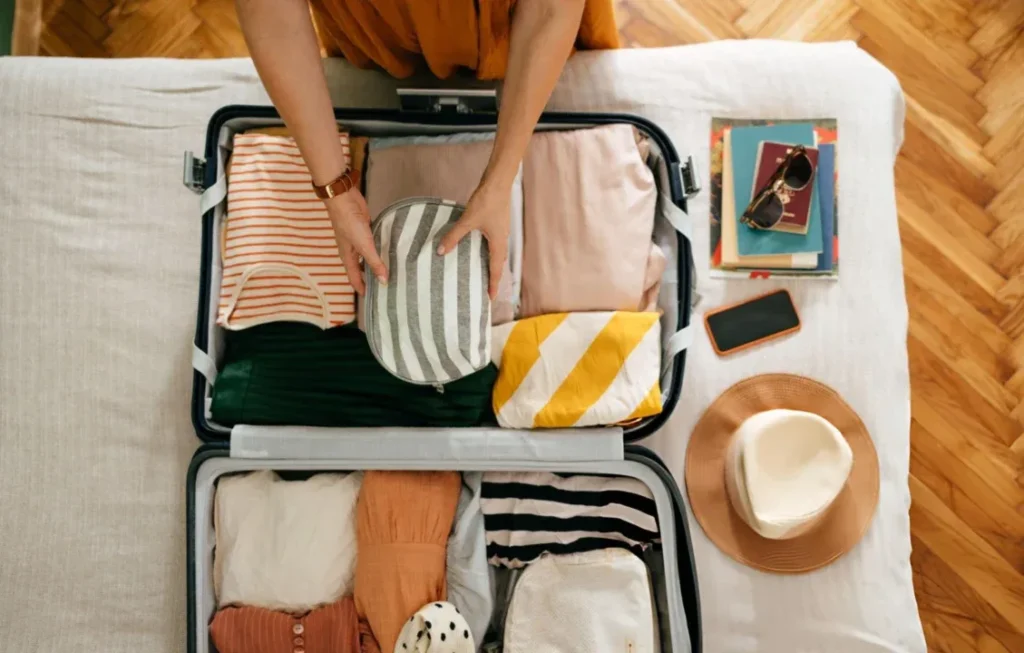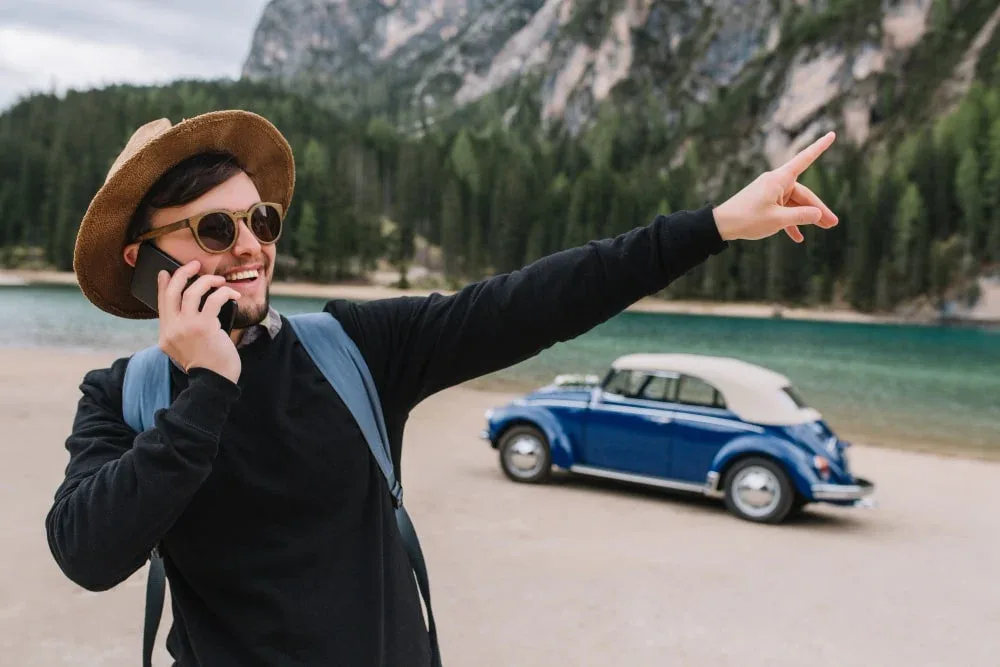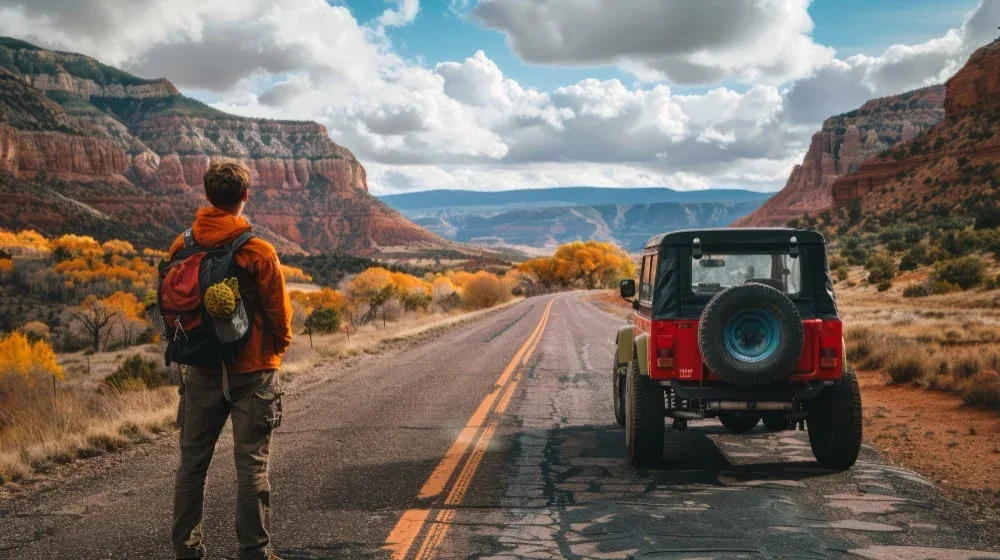Are you tired of the usual vacations and looking for a new, exciting way to explore the world? Planning a solo road trip is the perfect solution for adventure seekers. Yes, it may seem daunting at first, but with the right planning and preparation, a solo road trip can be one of the most relaxing and unforgettable experiences of your life.
I’ve personally experienced several solo road trips and learned valuable lessons along the way. That’s why in this guide, I’ll share my top tips to help you plan a successful solo road trip step by step.
Related Reading: 5 Best Countries for Female Solo Travelers
How to Plan a Solo Road Trip Step by Step
Decide on Your Destination

The first step in planning a solo road trip is deciding where you want to go. Do you want to explore the beautiful beaches along the coast or immerse yourself in nature at a national park? Make a list of all the places you’ve always wanted to visit, and then narrow it down based on your budget, time constraints, and personal interests.
Once you have a destination in mind, research the area to get a better understanding of what it has to offer. Look into local attractions, restaurants, and accommodations that align with your interests and budget. You can also reach out to friends or family who have visited the area before for recommendations and tips.
Plan Your Route
With your destination set, it’s time to map out your journey. Consider factors like distance, road conditions, and potential stops along the way. It’s always a good idea to have a backup route or alternate roads in case of unexpected closures or detours.
Take note of any must-see landmarks or scenic routes along the way. Planning your route will not only save you time but also allow for a more enjoyable and stress-free journey.
Book Your Accommodations
Once your route is planned, it’s time to book your accommodations. Whether you prefer hotels, Airbnb’s, or camping sites, make sure to do your research and read reviews before making a reservation.
Consider the location of your accommodations about your planned activities and attractions. Staying close to major sights can save you time and transportation costs.
Additionally, be mindful of any special requirements or amenities that may be needed for your trip. This could include wheelchair accessibility or pet-friendly options.
Create a Packing List

Now that the logistics of your trip are planned, it’s time to start packing! Creating a packing list can help ensure that you don’t forget any important items and can also help you pack efficiently.
Start by making a list of the essentials, such as clothing, toiletries, and any necessary documents or medication. Then, consider the climate and activities at your destination to determine what additional items you may need.
Be sure to also factor in any airline baggage restrictions and weight limits when deciding what to bring. Try using packing cubes or compression bags to make the most of the space in your luggage.
Remember to leave some room for souvenirs and other items you may want to bring back from your trip.
Stay Safe
When traveling, it’s important to prioritize your safety. Before your trip, research any potential health or safety risks at your destination and take necessary precautions. This can include getting necessary vaccinations, purchasing travel insurance, and researching local laws and customs.
During your trip, be aware of your surroundings and follow basic safety protocols such as not walking alone at night and keeping valuables secured. Stay in touch with friends or family back home and make them aware of your itinerary.
If you’re traveling internationally, register with the nearest embassy or consulate for assistance in case of an emergency. It’s also a good idea to keep copies of important documents like passports and visas in a safe place.
Staying Connected

Staying connected with loved ones and keeping up with work or personal matters while traveling can be a challenge, but it’s important to stay in touch. Here are a few friendly tips to help you stay connected during your trip:
- Purchase an international data plan for your phone to avoid expensive roaming charges.
- Consider getting a local SIM card if you have an unlocked phone.
- Use messaging apps like WhatsApp or Viber to communicate with friends and family back home for free.
- Utilize video calling services like Skype or FaceTime to stay visually connected with loved ones.
- Keep all important contact numbers saved in your phone in case of an emergency.
Immersing Yourself in the Culture
One of the most exciting parts of traveling abroad is immersing yourself in a new culture. This can mean trying local cuisine, participating in cultural activities, and learning the language. Here are a few tips to truly immerse yourself in the culture:
- Try new and authentic foods: Don’t be afraid to try new dishes and flavors that you may not be familiar with.
- Participate in cultural activities: Every country has its own unique traditions and celebrations. Take part in these activities to get a deeper understanding of the culture.
- Learn the language: Even if you don’t become fluent, learning some key phrases can help you connect with locals and show your respect for their culture.
- Interact with locals: Strike up conversations with locals and ask them about their way of life. This can provide a firsthand perspective on the culture.
- Explore beyond tourist hotspots: While famous landmarks and attractions are worth seeing, don’t limit yourself to just those places. Explore lesser-known areas to get a more authentic experience.
Read More: Overcoming Fear of Traveling Alone
Conclusion
Solo road trips can be a fulfilling and exciting way to explore new places and immerse yourself in different cultures. By following the above steps, you can plan a successful and enjoyable solo road trip.
Remember to prioritize safety, research your destination, and embrace the freedom and flexibility that comes with traveling solo. If things don’t go as planned, stay calm and adapt to the situation.
Frequently Asked Questions
Is it safe to go on a solo road trip?
Yes, as long as you take necessary precautions and stay aware of your surroundings, solo road trips can be a safe and enjoyable experience. It is important to plan ahead, have a reliable vehicle, and let someone know your itinerary in case of an emergency.
What’s the best way to plan the perfect route for a solo road trip?
Consider factors such as distance, scenery, attractions, and accommodations when choosing a route for your solo road trip. Research online or consult with experienced travelers for recommendations.
What essentials should I pack for a solo road trip?
Pack essentials such as a first aid kit, snacks and water, a map or GPS device, emergency car tools, and appropriate clothing for the weather. It is also helpful to bring entertainment items like music or audiobooks to keep you entertained on long stretches of road. Don’t forget to also pack any necessary medication or personal items.
Is it necessary to have a budget for a solo road trip?
Having a budget can help you manage your expenses and prevent overspending while on a solo road trip. Consider the cost of gas, accommodation, food, and any activities or attractions you plan on visiting. You may also want to budget for unexpected expenses such as car repairs or emergencies.
